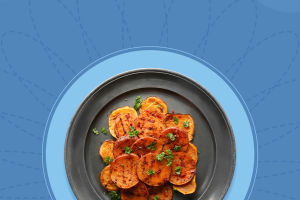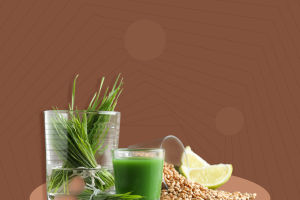Cookies are usually baked until crisp or just enough to make them soft and chewy, and some cookies are not even baked.
Cookies come in many different styles, such as green tea, milk, chocolate, butter, peanut butter, walnut, or dried fruit, to name a few.
Cookies are explained in the United States and Canada as thin and flat custard-like biscuits, while the English cookie comes from the German word koekje, which means "thin custard". Today, there are thousands of cookie-baking recipes around the world, but most of them fall into a few specific cookie categories.
You might be surprised by the technical definition of a cookie in the US as a small, light, sweet cake.
In fact, the first cookies were baked to test the oven temperature with a small amount of cake batter. The first official use of the name "cookie" was in Amelia Simmons' cookbook in 1796. This cookbook contains two recipes for cookie baking.
And today there are already thousands of cookie recipes. Cookies generally fall into a few main categories, and most cookies fall into the following five categories.
1. Drop Cookies
Also known as American-style cookies, drop-forming cookies, as the name suggests, are a spoonful of batter and then drop onto the cookie sheet to automatically form. This type of cookie doesn't need to be flattened, as the batter spreads naturally during baking. Drop-formed cookies are often also added with different toppings like macadamia nuts, oatmeal, pumpkin, and molasses. It was very soft and cake-like when baked.
2. Formed Cookies
The dough is usually made into the desired shape by hand. First, roll the dough into small balls with your hands, then use the back of a spoon to flatten the dough balls. This cookie can also be made into other shapes in the middle.
3. Rolled Cookies
Roll out the dough with a rolling pin and cut it with a cookie cutter. Stick cookies include traditional frosted cookies and gingerbread cookies. When making stick cookie shapes, place them on a cool baking sheet to prevent them from deforming.
4. Sliced Cookies
Sometimes called icebox cookies, they are made from sliced rolls of dough that have been frozen in the refrigerator. Slicing the dough and baking it in a cool baking pan will give the cookie a crisper texture.
5. Striped Cookies
Not a cookie by the traditional definition, but a cookie alternative made by some busy bakers. The cookie bar contains the basic ingredients found in other cookies but is made by mixing all the ingredients and laying them flat on a baking sheet. Once baked and completely cooled, cut into sticks.
Cookies are delicious, and beautiful, and can be made at home.
Preparation:
Butter: 100 grams
Caster sugar: 20 grams
Powdered sugar: 40 grams
Whole egg liquid: 43 grams
Low-gluten flour: 143 grams
Piping bag
Piping tip
Step 1: Cut the butter into small pieces and let it soften at room temperature. Add sugar and powdered sugar to the softened butter, and beat the mixture with a whisk to beat the butter. Whip the butter until it puffs up and becomes lighter in color. Add the beaten eggs in three batches.
Step 2: Sift in the low-gluten flour. Using a rubber spatula or a flat spoon, whisk the flour and butter until the flour is all wet and well combined. Do not overmix.
Step 3: Grease the baking sheet with parchment paper. Pour the batter into a piping bag and squeeze out the pattern on the baking sheet.
Step 4: Bake in the preheated oven. In the middle of the oven, at 190 degrees, for about 10 minutes. Pay attention to the last few minutes and take it out in time.
Allow the biscuits to cool down naturally before sealing and storing. This is how delicious cookies are made.


